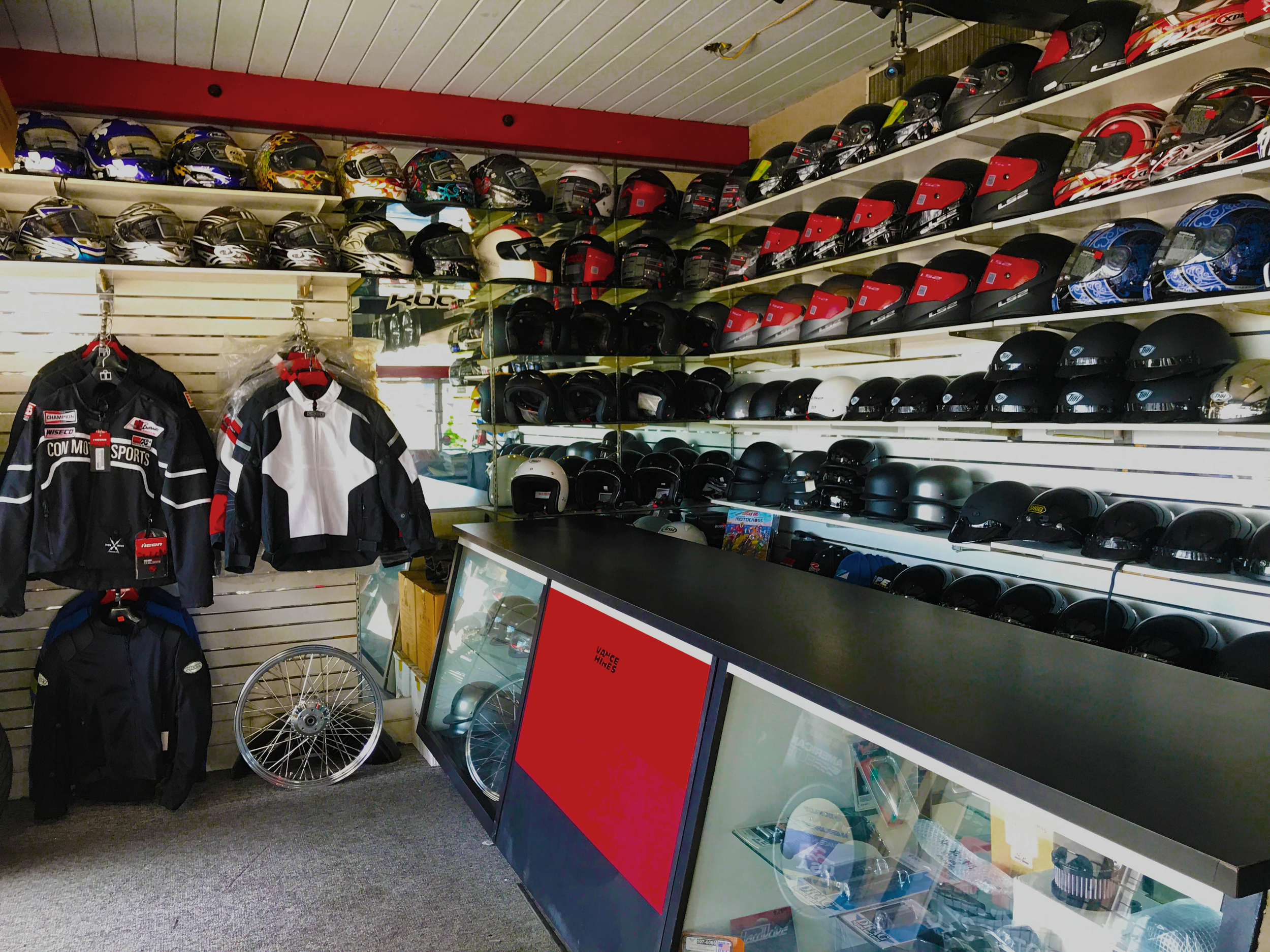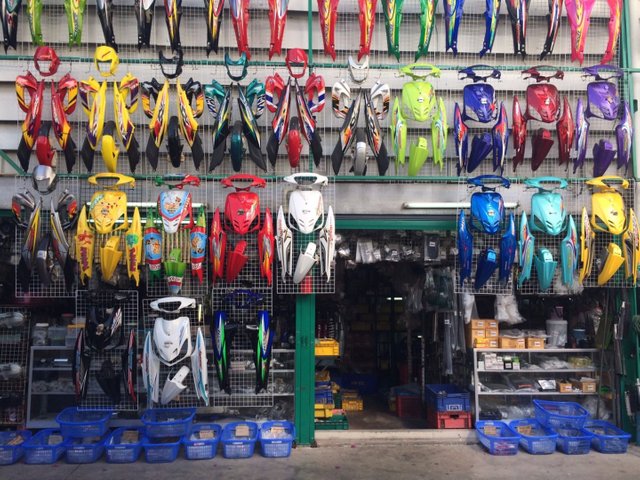Shop the very best MX Parts NZ for Your High-Performance Bike
Shop the very best MX Parts NZ for Your High-Performance Bike
Blog Article
Recognizing the Crucial Parts of a Motorcycle: A Comprehensive Overview for Fanatics
For motorbike fanatics aiming to raise their riding experience and guarantee their bikes run efficiently, comprehending the necessary elements of a bike is extremely important. Each aspect, from the engine's elaborate operations to the important function of the stopping mechanisms, not only influences efficiency however likewise safety and comfort. This guide will go through the fundamental parts that every biker should recognize with, allowing educated options in both maintenance and potential upgrades. As we start this exploration, one must ask: exactly how does each element engage to develop the smooth adventure every lover looks for?
Engine Parts

The camshaft plays a crucial role in controlling the timing of the engine's shutoffs, making sure the accurate opening and closing needed for reliable gas and air consumption, in addition to exhaust expulsion. This timing is vital to preserving optimal engine performance and performance. Additionally, the carburetor or fuel injection system, depending upon the motorbike model, is in charge of mixing air with fuel in the appropriate proportion for burning.
The air conditioning system, either air or liquid-based, functions to keep the engine's temperature within functional limits, avoiding getting too hot and guaranteeing long life - motocross parts nz. Each element, meticulously designed and incorporated, contributes to the smooth operation of the engine, defining the bike's power output and general performance
Transmission System
Essential to the motorbike's functionality, the transmission system makes sure efficient power transfer from the engine to the wheels. This system comprises several essential components, including the clutch, transmission, and final drive, each playing a crucial function in equating the engine's power right into motion. The clutch, commonly operated by a hand bar, offers to disengage the engine and engage from the transmission, permitting smooth equipment adjustments and regulated velocity.
The gearbox, often referred to as the transmission proper, has a set of gears that bikers can by hand change through to adjust the bike's rate and torque output. These equipments are set up in a series that allows the bike to speed up efficiently and keep optimal engine efficiency across numerous speeds. Many motorbikes utilize a sequential transmission, requiring the motorcyclist to change gears in an established order.
Braking Mechanisms
While understanding the transmission system is key to using a motorcycle's power, equally vital is the ability to control and stop that power properly, which is where braking mechanisms enter play. Brakes are critical for safety and performance, supplying the biker with the essential control to navigate different terrains and problems. Normally, motorbikes include 2 kinds of stopping systems: disc brakes and drum brakes.
Disc brakes are much more common in contemporary motorbikes due to their remarkable efficiency. This system provides better warm dissipation, regular efficiency, and boosted quiting power, specifically in damp conditions.
Conversely, drum brakes, though much less usual, are best adv helmet still found in some motorcycles. They function by pushing brake footwear versus the inner surface area of a drum affixed to the wheel. While typically less reliable in warmth dissipation and quiting power, drum brakes are simpler and a lot more cost-efficient.
Recognizing these stopping systems' nuances permits motorcyclists to preserve their motorbikes correctly and value the engineering that makes sure risk-free and efficient stopping.
Suspension and Guiding
Suspension and steering systems are crucial parts that substantially influence a motorcycle's handling and experience comfort. The suspension system, including forks at the front and shock absorbers at the rear, takes in road irregularities, improving stability and control. Front forks, usually telescopic or inverted, compress and rebound to alleviate effects, while rear shock absorbers preserve tire contact with the roadway, important for traction and safety.
Guiding, focused around the handlebars, connects the biker to the motorbike's directional control. The guiding head bearings check here make sure smooth procedure, enabling precise ability to move. Proper alignment and upkeep of these bearings are important for foreseeable guiding feedback and lowering rider exhaustion.
The suspension's adjustability is another essential element; preload, damping, and rebound setups allow modification to fit numerous riding designs and problems. This flexibility is crucial for maximizing performance, whether browsing city streets or tackling tough trails. Advancements like digital shock absorber offer real-time changes, boosting trip quality throughout diverse terrains.

Electrical Equipments
After guaranteeing a smooth and controlled adventure with reliable suspension and steering systems, focus turns to the electric systems, a crucial aspect of modern motorcycles. These systems play an important duty not just in beginning the engine yet additionally in powering various elements that enhance the capability and safety of the motorcycle.
At the heart of a motorcycle's electrical system is the battery, which stores electric power necessary for starting the engine and powering auxiliary systems - motorcycle shop. The alternator or generator, paired with the rectifier-regulator, makes sure the battery remains charged while the bike functions, transforming mechanical energy right into electric energy and maintaining voltage levels
The ignition system, an additional essential element, is accountable for firing up the air-fuel mix in the engine's cylinders. Modern motorcycles usually make use of a digital ignition system, providing better effectiveness and reliability contrasted to typical systems.
Illumination systems, including fronts lights, tail lights, and indicators, are likewise important, guaranteeing exposure and safety for the rider. Extra digital components such as sensors, control systems, and presents contribute to advanced attributes like gas injection administration, anti-lock braking systems (ABS), and digital control panels, better enhancing the riding experience.
Final Thought
A detailed understanding of a motorcycle's crucial parts, including the engine, transmission system, braking devices, suspension, guiding, and electrical systems, is indispensable for lovers aiming to maximize comfort, safety and security, and performance. Mastery of these aspects enables for click notified decisions pertaining to maintenance and upgrades, eventually enhancing the riding experience. By integrating this knowledge, bikers can guarantee their bikes operate at peak efficiency and reliability, consequently making the most of both pleasure and durability of their cars.
For motorcycle lovers looking to elevate their riding experience and ensure their bikes run smoothly, understanding the essential parts of a motorcycle is extremely important.Indispensable to the motorbike's functionality, the transmission system makes certain efficient power transfer from the engine to the wheels.While comprehending the transmission system is vital to taking advantage of a bike's power, equally essential is the capability to manage and quit that power efficiently, which is where braking systems come right into play. Typically, motorcycles feature two types of braking systems: disc brakes and drum brakes.
A comprehensive comprehension of a motorcycle's necessary components, including the engine, transmission system, braking mechanisms, suspension, guiding, and electric systems, is essential for fanatics aiming to optimize efficiency, security, and comfort.
Report this page